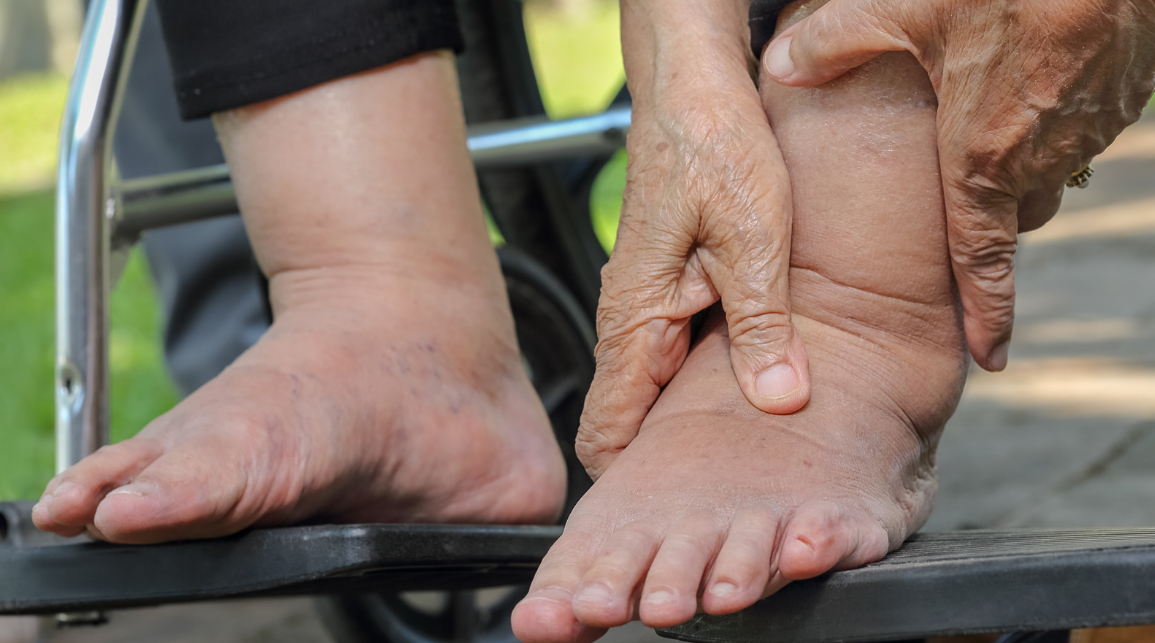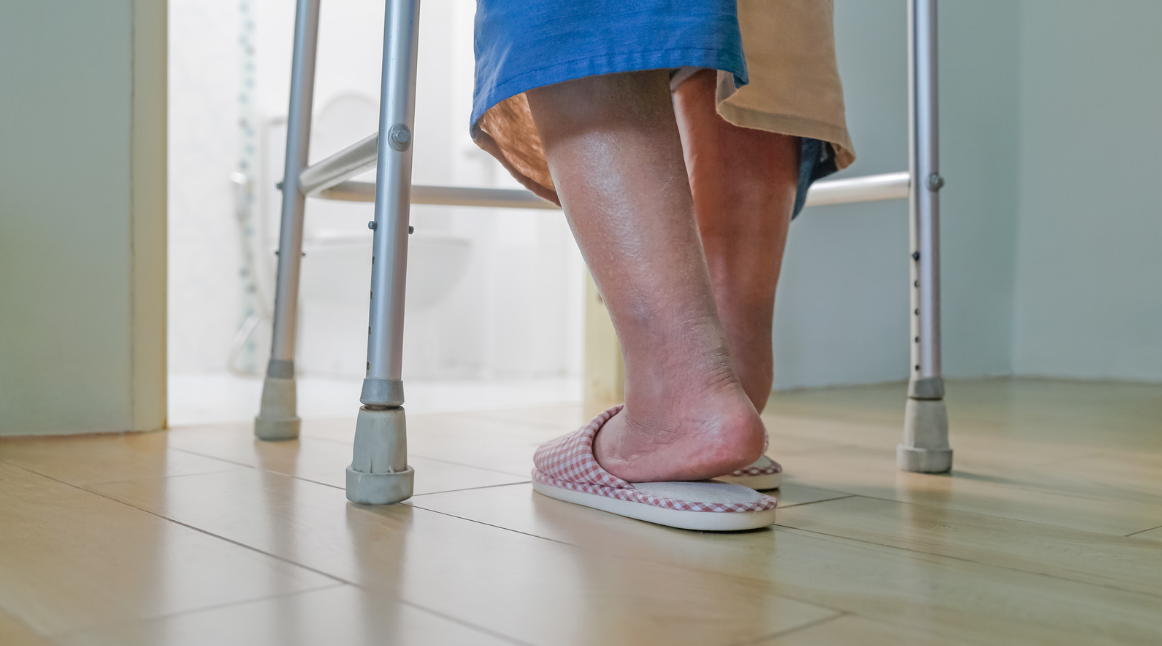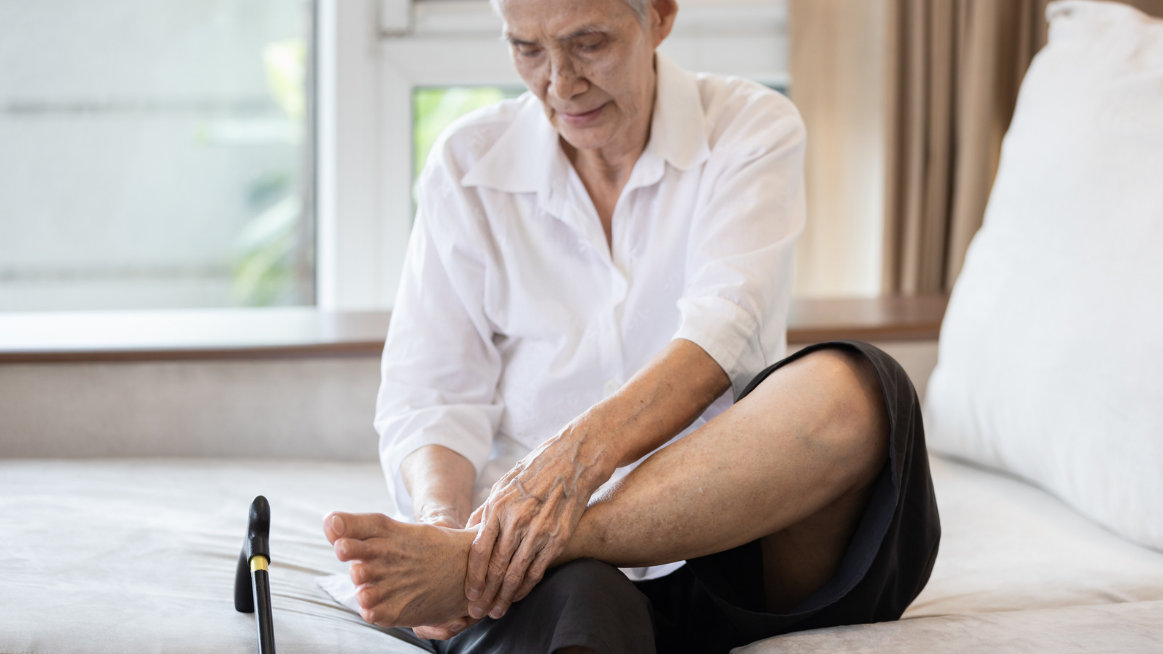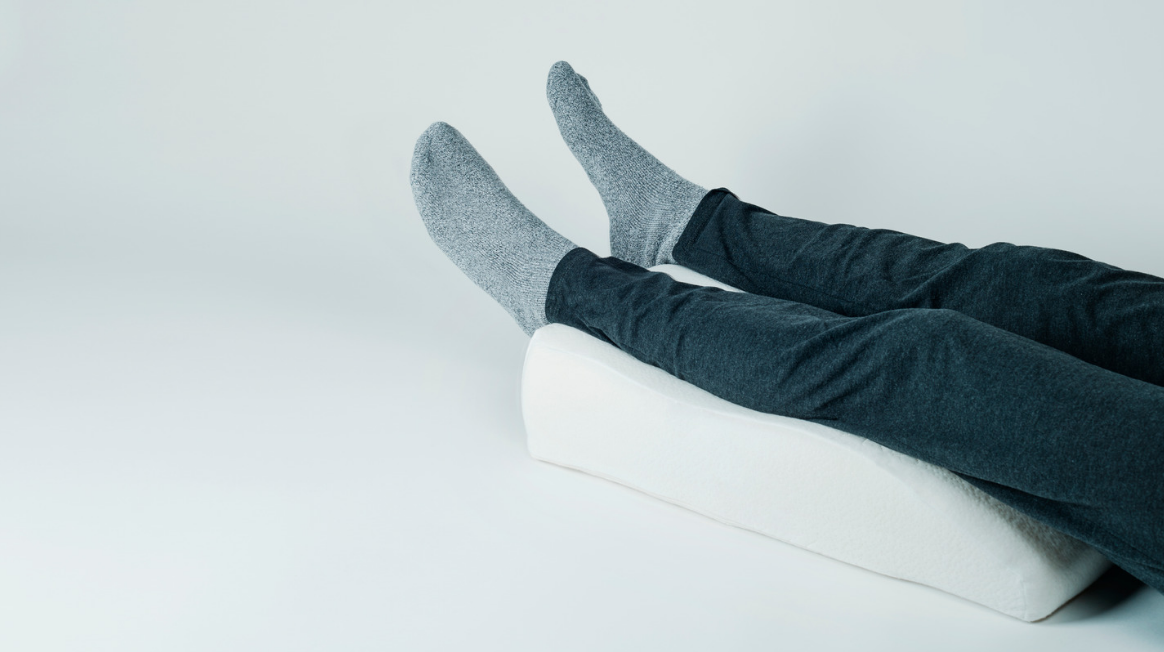Swollen Ankles in Elderly: Practical Knowledge for Spotting Causes and Administering Relief

Swollen Ankles can be a common concern among the elderly population, often causing discomfort and mobility challenges. Understanding the causes and knowing how to provide relief is essential for ensuring their well-being. This article aims to provide practical knowledge for spotting the causes of swollen ankles in the elderly and administering effective relief measures.
Swollen Ankles in Seniors: An Informative Dive into Causes and Remedies
Swollen ankles refer to the abnormal accumulation of fluid in the soft tissues around the ankle joint, leading to visible puffiness and discomfort. This condition can affect one or both ankles and may vary in severity. While some degree of ankle swelling can occur naturally with age, excessive or sudden swelling should be taken seriously as it may indicate an underlying health issue.
Symptoms to Look Out For
When it comes to swollen ankles in the elderly, being aware of the telltale signs is crucial for timely intervention. Here are some symptoms to watch out for:
- Visible swelling: The affected ankle may appear visibly swollen, with a puffy and enlarged appearance.
- Tightness or heaviness: Individuals may experience a sensation of tightness or heaviness around the ankles.
- Reduced mobility: Swelling can cause discomfort and limited mobility in seniors, making walking or performing daily activities difficult.
- Skin changes: The skin around the ankles may appear stretched, shiny, or discolored.
- Pain or tenderness: Some individuals may experience pain or tenderness in the swollen area.
Identifying the Causes
Swollen ankles in elderly individuals can stem from various underlying causes. Understanding these causes is essential for identifying the root issue and seeking appropriate treatment. Let’s explore some potential causes:
1. Prolonged Standing or Sitting

One common cause of swollen ankles in the elderly is prolonged periods of standing or sitting. When the body remains stationary for extended periods, fluid can accumulate in the lower extremities, leading to ankle swelling.
2. Venous insufficiency
Venous insufficiency occurs when the veins in the legs struggle to transport blood back to the heart effectively. This compromised blood flow can cause fluid retention and result in swollen
ankles. Aging, obesity, and a sedentary lifestyle can contribute to venous insufficiency.
3. Medications
Certain medications commonly used by elderly individuals may have side effects, including ankle swelling. These medications can disrupt the body’s fluid balance and lead to edema, resulting in swollen ankles. It is important to consult a healthcare professional to determine if any medications could be causing the swelling.
4. Infections
Infections can also manifest as swollen ankles in elderly individuals. Conditions such as cellulitis, a skin infection, or osteomyelitis, a bone infection, can cause localized inflammation and edema in the ankles. Prompt medical attention is necessary to diagnose and treat the underlying infection.
5. Injury

Ankles are susceptible to injury, especially in the elderly. Sprains, fractures, or ligament tears can cause immediate swelling in the affected ankle. A healthcare professional should evaluate injuries to determine the extent of the damage and appropriate treatment.
6. Various Health Conditions
Several underlying health conditions can contribute to swollen ankles in the elderly. These may include heart disease, kidney disease in seniors, liver disease, or conditions affecting the lymphatic system. These conditions can disrupt fluid balance in the body, leading to ankle swelling. Proper medical assessment is crucial to identify and manage these underlying health issues.
By understanding the potential causes of swollen ankles in the elderly, individuals and their caregivers can better recognize the symptoms and seek appropriate medical attention for accurate diagnosis and treatment. It is important to consult a healthcare professional for a thorough evaluation to determine the underlying cause and develop an effective management plan.
Relief Remedies for Swollen Ankles

Addressing swollen ankles in the elderly requires a comprehensive understanding of potential remedies. These remedies span from simple at-home methods proven to reduce discomfort to more specialized medical treatments designed for severe cases.
Natural Relief Remedies
Natural remedies are first-line strategies that can be implemented at home:
- Rest and elevation: Resting the legs and keeping them elevated above the level of the heart can limit the effects of gravity and reduce fluid buildup in the ankles. This can be done with the support of cushions or a reclining chair.
- Exercise and movement: Regular, low-intensity exercises like walking, cycling, or swimming can play a crucial role in combating swelling. Exercise encourages blood and fluid circulation, preventing excess fluid retention in the ankles. However, intensive exercise could exacerbate the condition, so moderation is key. You may consider the exercise we provide below.
- Compression socks: These specially designed socks or stockings apply pressure to the ankles and lower legs, helping to improve blood flow and reduce the diameter of swollen veins. This further prevents the buildup of fluid.
- Hydration: Adequate hydration helps your body flush out excess salt, a common culprit in swelling. Aim for around 6-8 glasses of water a day, but remember that hydration needs may vary based on individual health conditions.
- Limiting salt intake: A diet high in salt can exacerbate fluid retention, leading to swelling in the ankles. Consider a diet low in salt yet rich in potassium, which helps mitigate sodium’s effects.
Medical Treatments
When natural remedies aren’t enough, medical treatment may be necessary:
- Medications: Depending on the underlying cause, doctors might prescribe medications. These can range from diuretics (to combat fluid retention in cases of kidney or heart issues) to anti-inflammatory drugs.
- Physical therapy: Physical therapists can design a program targeting ankle strength and mobility, relieving some swelling symptoms.
- Surgery: In severe cases, surgical procedures might be required to address structural issues or severe cases of venous insufficiency.
Always consult a medical professional for personalized advice regarding swollen ankle relief. While these remedies can alleviate symptoms, only professional medical advice can help identify and treat the root cause.
Recommended Home Exercises for Swollen Ankles in the Elderly

If you or a senior you’re caring for wants to start exercising to alleviate swollen ankles, taking necessary precautions is essential. Before starting any exercise regimen, consult a doctor or physical therapist to ensure it’s safe and appropriate for the individual’s condition. Opt for low-impact activities that are gentle on the joints. The following exercises can help improve circulation without placing excessive strain on the ankles:
Exercise 1: Ankle Pumps (Elevated)
- Lie down comfortably on a bed or the floor.
- Place pillows or cushions under your feet to elevate them above your heart level.
- Move your feet by pointing your toes up towards your head, then point them down away from it. This completes one repetition.
- Gently move through the sequence, ensuring smooth transitions between pointing up and down.
- Aim for a total of 30 repetitions.
- Try to perform this exercise 3 times a day for maximum effectiveness.
Exercise 2: Butt Squeezes
- Begin by sitting comfortably on a chair with feet flat on the ground.
- Tighten the muscles in your buttocks by squeezing them together.
- Hold the squeeze for 5 seconds.
- Relax muscles and rest for 5 seconds.
Repeat this sequence for ten repetitions.
Exercise 3: Single Knee to Chest
- Lie on the floor, or a bed with both legs extended.
- Keeping one leg straight, bend the other leg at the knee.
- Slowly bring the bent knee towards your chest while grasping your shin or thigh.
- Hold the position for 15-20 seconds.
- Release the leg, returning it to its extended position.
- Rest for a few seconds, then repeat for the other leg.
- Complete three repetitions for each leg.
These safe and simple exercises can be performed daily to ease discomfort and reduce swelling in the ankles. Remember to consult a healthcare professional before initiating any new exercise routines.
Recognizing When to Seek Medical Help

While mild cases of swollen ankles in the elderly can often be managed with lifestyle modifications and home remedies, some situations warrant medical attention. Here are some indicators that should prompt you to consult a healthcare professional:
- Sudden or severe swelling: If the swelling in the ankles is sudden, severe, or rapidly worsening, it could indicate a more serious underlying condition that requires medical evaluation.
- Persistent symptoms: If the symptoms persist despite self-care measures, such as elevation, compression, and lifestyle changes, it is important to consult a healthcare provider to identify the cause and explore appropriate treatment options.
- Associated Symptoms: If the swollen ankles are accompanied by additional concerning symptoms like chest pain, shortness of breath, severe pain, or signs of infection (e.g., redness, warmth, or fever), immediate medical attention is necessary.
- Impaired mobility or functionality: If the swelling significantly impairs mobility, causes difficulty in walking or performing daily activities, or if you notice a sudden decrease in range of motion, seeking medical assistance is advisable.
Remember, your healthcare provider is the best resource for accurately diagnosing the underlying cause of swollen ankles and determining the most effective treatment plan. If you are unsure or concerned, it is always better to err on caution and seek medical attention promptly.
Home Care Aid for Seniors with Swollen Ankles

Home care services play a pivotal role in assisting seniors with swollen ankles. Caregivers closely monitor the condition, reminding seniors to perform doctor-recommended exercises to improve blood circulation. Additionally, they ensure seniors are hydrated and are consuming a low-salt diet, which is crucial for reducing fluid retention. With assistance in elevating legs and applying compression stockings, Professional caregivers aid in decreasing swelling. Furthermore, they provide necessary medicine reminders and arrange prompt doctor appointments when needed. Thus, home care offers personalized attention and helpful interventions to effectively manage swollen ankles in seniors.
Closing Thoughts
Understanding the various causes, symptoms, and treatment options for swollen ankles in the elderly is essential for maintaining their overall health and well-being. By having practical knowledge about this condition, you can successfully identify the swelling source and effectively administer relief.
We hope this guide has been helpful in providing you with the necessary tools to spot the causes of swelling and manage the condition through lifestyle changes, home remedies, and medical care. Remember, early detection and appropriate intervention are crucial to prevent complications and improve the quality of life for our elderly loved ones.
When you cannot be there in person but still want to extend compassionate care for your loved one, you can depend on Serenity Senior Care. We are committed to providing the best care possible, ensuring our elderly clients receive the support and assistance they need to lead healthy and fulfilling lives. With Serenity Senior Care, you can trust that your elderly loved ones are in capable and caring hands.


